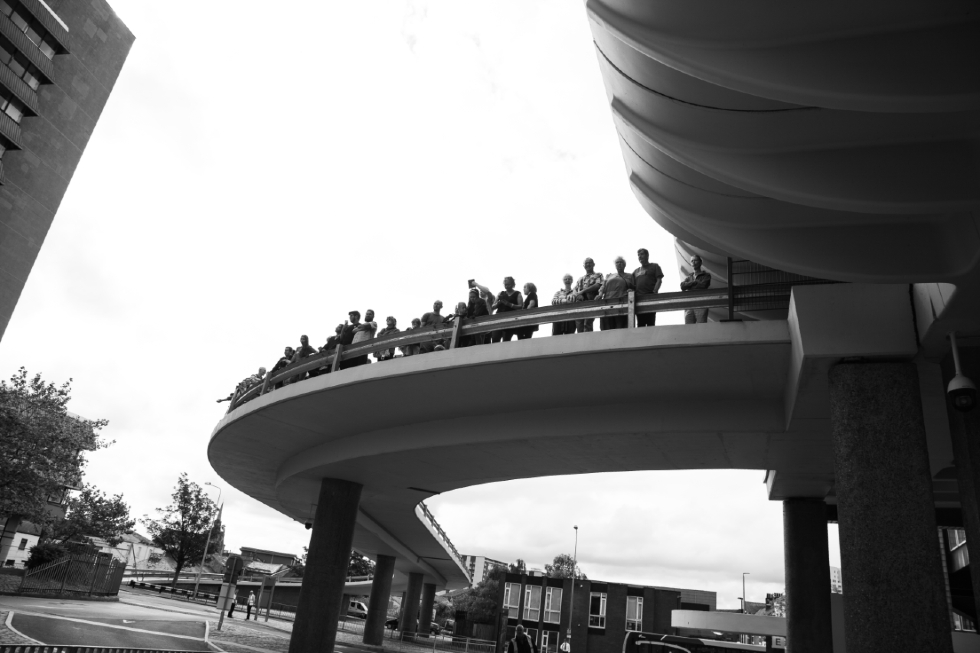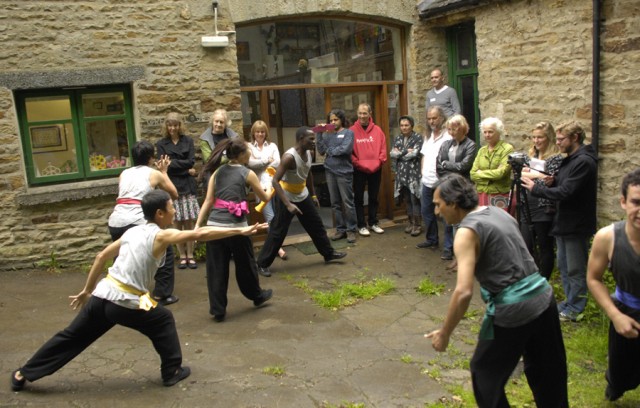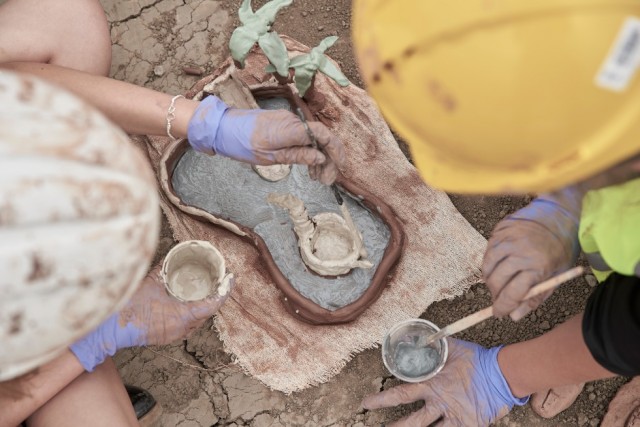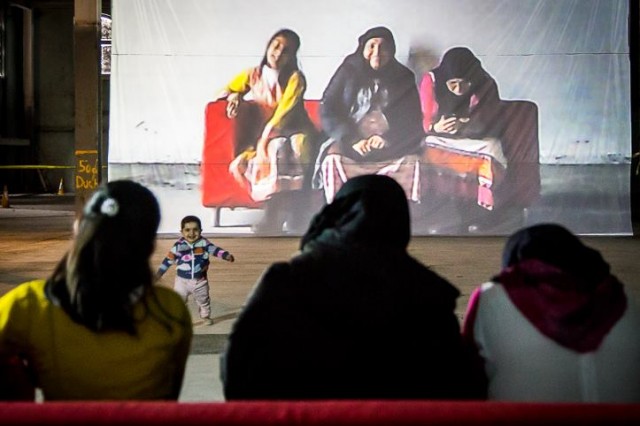“Diversity is crucial to evolution” – How an embedded approach to contemporary art engages communities in the North West

“If the arts cannot reflect a diverse range of backgrounds, they simply will not represent who we are as a country.” Bob Dickinson explores the region’s embedded arts organisations…
If there’s one clear message that has emerged from the current pandemic crisis, it’s that the people protecting us, and risking their lives doing it, are as diverse and international in their backgrounds as they are committed to working together for our survival.
For the arts, I’d like to think that diversity is as important as it is for the NHS. If the arts cannot reflect a diverse range of backgrounds, ethnicities, sexualities and class backgrounds, they simply will not represent who we are as a country. It’s emphasised by Arts Council England in their belief that museums, galleries and libraries should “ensure their work draws on and reflects the full range of backgrounds and perspectives to be found in our society,” a range that should also be reflected in the staffing and leadership of those institutions.
But what about places that have never had museums or galleries – and maybe the library has closed? Or, to put it another way, with a region-wide, northwest focus: what does diversity look like in relation to the arts, outside Manchester and Liverpool?
I’ve been investigating this, focusing in particular on contemporary art, by talking to representatives from four organisations whose relationship with the people who live around them is governed by a commonly-labelled approach: they see themselves as “embedded” within their communities. By which, I mean that all of these organisations exist within, and interact with, an existing, local population, with its own social networks, and ethnic and class differences, which are together experiencing and enduring economic and cultural change. What I discovered is that this embeddedness is as varied as the locations in which those organisations are based. And that’s important, because if we are going to celebrate diversity, and make it a creative force, we have to understand its complexities.
Two of the organisations I’ve spoken to are rural – Green Close, based in the village of Melling, near Carnforth, and Grizedale Arts, based near Coniston, Cumbria. The other two, by contrast, have urban settings – these are In-Situ, based in the former mill town of Nelson, just north of Burnley, and In Certain Places, a curatorial partnership operating in and around the city of Preston.

Sue Flowers co-founded Green Close with her partner Pete Flowers, in 1996. Summarising their commitment to an embedded approach, and the hard task of making it work, she told me, “I’m used to working with people who’ve perhaps never set foot in a gallery before. We wanted to make contemporary art relevant to the communities around us, and we’ve spent the majority of the last 24 years opening that door, I think.” Grizedale Arts’ director since 2000, Adam Sutherland, started to answer similarly: “We see ourselves as part of the community. As arts organisations go, we are quite significantly embedded.” But then he added, “My proviso on that would be that with the arts, you’re never really embedded. There’s always a certain sense from the community, talking generally, that they see us as outsiders.”
In Nelson, where In-Situ’s mission-statement is “Embedding Art into Everyday Life,” Paul Hartley feels less of an outsider. “In essence it was one of the main reasons why we started the organisation,” he says, referring back to its beginnings in 2012: “Myself, Willian Titley and Kerry Morrison. Both me and William live in Pendle and it was kind of a real, active decision to make a commitment to a place that we are from and still live, and try and take a longer-term approach.” Preston’s In Certain Places sees itself as “part of the DNA of the city.” The partnership, begun by Charles Quick in 2003, and joined soon after by Elaine Speight, is based at UCLAN, in the heart of widespread urban redevelopment, relating to which In Certain Places has introduced a series of artistic responses and interventions.
In embedding artistic work into spaces shared by all, we can think about another version of diversity. For example, Speight mentions ICP’s Expanded City Project which began in 2016, after they were invited by Preston City Council to bring in artists to “critique and contribute to” a redevelopment scheme involving 17,000 new houses on the city’s formerly-rural fringes. Here, she told me, “It is predominantly white communities. So, I guess what I’m interested in in terms of diversity is diversity of experience, the different ways people interact with places, in bodily ways, so I think gender, and issues with disability and age come into that.”

Each of the four organisations have invited an ethnically diverse range of artists to visit, work, hold workshops, and interact with local populations. But what if, as Speight mentions, the local population is not itself multi-ethnic? Addressing the Lake District’s “largely, almost exclusively white, non-diverse population” Sutherland observes that as a consequence, “Everything we do that embraces diversity has quite an impact here. We try to make the argument that diversification, diversity, is crucial to community evolution, change, and development. And then we argue of course that change is an essential part of the community, it has to always be happening. It’s not something to be feared, it’s part of how life progresses.”
This need for change was reflected too in what Sue Flowers told me about some of the challenges she experienced before founding Green Close. Recalling a visit to the local school, and a conversation with the head teacher, Flowers said: “We asked what the diversity policy was and she said ‘Well that’s not needed in this area.’ And [Pete and I] looked at her in disbelief. And then, she said, ‘Well we’ve got our little gypsy family but there’s nobody else really like that here,’ and this was 1990. I was thinking I cannot believe this is still going on. So we thought, we’re gonna do something about this, because racism comes from places of ignorance, and if these little pockets of society are ignorant, then this is its breeding ground. So we wanted to work with schools and young people to help them understand the wider world they lived in.”
But there are other kinds of change forced on rural communities, involving increasing volumes of road traffic and population growth, which have, according to Flowers, caused an “erosion of the social fabric” of Melling, and made the village into “more of a commuter space” where locals and newcomers don’t mix much. Further afield, in the South Lakes, Adam Sutherland notes how “Two hundred years of tourism [have] totally changed communities here and changed the demographic of communities,” and yet, “There’s no kind of vehicle for participation, for interaction, for exchange, and that’s one of the things we’ve also been trying to address in terms of local communities, that tourism can be viewed in a very different way, as a cultural asset.”
What Sutherland has also noticed, as a result of the government’s confusing policy announcements on lifting lockdown and travel restrictions, is “This anti-tourism thing that’s going on at the moment, almost vigilante groups, blocking car parks and all the rest of it. It allows for pent-up feeling that can’t be expressed, you can’t express a negative view about tourism, because everybody thinks they’re dependent on it, economically.” Questioning this dependency in some ways underlies Grizedale’s next ten-year programme, which Sutherland describes as being “Dedicated to, in effect, bringing together the resources of the whole valley. But also bringing together the resources of Grizedale.”
But developing and expanding artistic engagement is just as challenging in urban settings with multi-ethnic populations. The work of In-Situ, for instance, addresses large, local communities of South Asian heritage. “It’s not that they’re hard to reach,” Paul Hartley told me, “It’s about where the work can connect with them.” This began to happen after an exchange programme was arranged with a university in Lahore, Pakistan, resulting in some of the scheme’s graduates applying for residencies at In-Situ. One of these was Zoya Siddiqui. “She made her own ways into the local community, and that changed the game a little bit, really,” Hartley recalls. “She managed to reach 98 families, just literally going from door to door. She wanted to find out how the families had come to live in Brierfield, and obviously the mill was the centre of that, and the cotton industry.”

The resulting project, Geology of a Home (2015), presented at the abandoned Brierfield Mill, consisted of a live video feed of these families, seated on a settee, looking at a photo of themselves similarly seated at home. He added: “That residency really opened the door for us to start to meet more people from the community, the Asian community, because they started coming back to events. They’d built up this connection.” As a result, Brierfield Mill became the location for a subsequent project by the US artist Suzanne Lacy, The Circle and the Square, 2015-2017, which also contained important contributions from the local Pakistani community.
As all arts organisations try to recover from the current crisis, Elaine Speight is relatively optimistic about In Certain Places. “We’re in the good position of just having started a programme of work, so we’ve got the funding for it,” she says, going on to describe a project ICP have been working on with Preston artist and cyclist, Gavin Renshaw. “For the past four years he’s been looking at cycling infrastructure in Preston, particularly in relation to commuting. Even though Preston’s great for leisure cycling, it’s not very well catered for getting in and out of the city if you’re working there.”
Perhaps more of us will be exploring sustainable ways of travelling in the post-pandemic world we’re moving towards. And more of us will certainly be trying to recover, and rebuild wellbeing. Sue Flowers has recently worked in mental health research, resulting in an increasing interest in what art can offer. “There’s quite a lot of male suicides in rural communities,” she told me, “And some of the farming communities that I know think they’re not entitled to anything. They just kind of suffer quietly.” Flowers’ concluding words summarise, for me, the close bonds that embedded arts can create with all kinds of people, in all their diverse conditions. “We’ve got this lovely resource with studios that we want to share with other people. And recently I’ve been doing some one-to-one work with a woman who’s been struggling. And it’s really worked, and I just thought, I really want to do this.”
Bob Dickinson
Images, from top: In Certain Places: Keith Harrison, audience watching Conductor performance, photo courtesy Ashley Hardman; Green Close: Confluence of Rivers; ICP: Emily Speed, Model Village, photo courtesy Garry Cook; In-Situ: Zoya Siddique, Geology of a Home, 2015 Photo: Zoya Siddique, courtesy In-Situ
This article is part of the series, ‘New Critical Writing North West: Voices on Lancashire & Cumbria’: new pieces of critical writing which will review and examine issues relating to the contemporary visual arts in Lancashire and Cumbria. The series has been commissioned by Contemporary Visual Arts Network North-by-NorthWest (CVAN NbyNW), and a new feature will be profiled on The Double Negative each month until October 2020.





